The Human Touch in High-Tech Research: A 2024 Outlook on Industry Trends
Our 7th annual Future Trends in Research and Technology webinar brought together leaders in the market research industry to discuss how innovations are reshaping the field. Featuring Barry Jennings from Microsoft, Charlie Rader from Procter & Gamble (P&G), Lenny Murphy from Greenbook, and Brett Watkins and Kelli Hammock from L&E Research, the panel delved into advancements in AI, synthetic data, insourcing, and participant experience. This discussion provided a nuanced look at the balance between embracing technology and maintaining a human-centered approach in research.
AI: Separating Hype from Reality
Artificial intelligence was at the forefront of the conversation, with panelists discussing the distinction between buzz and practical applications. Barry Jennings from Microsoft opened with an insightful take: “I’m not too worried about Terminator or The Matrix just yet.” He shared how Microsoft’s AI efforts focus on tangible improvements, from automating mundane tasks to enhancing the value of qualitative research assets. “What do we do with all those transcripts, videos, etc., and make them more useful research assets?” Jennings asked, emphasizing that AI’s role at Microsoft is less about futuristic scenarios and more about creating efficiencies that allow researchers to focus on deeper insights.
Charlie Rader from P&G added to the conversation by describing AI as a “new operating system” for research. Rader highlighted how P&G leverages AI through external vendors who provide tailored solutions specific to their research needs. “I’m looking for vendors and solutions that have done some of the lifting in that space so that it’s easily moving on into talking with people, getting the conversations done, and then synthesizing to what’s next,” he explained. This focus on customized AI tools underscores P&G’s commitment to actionable insights rather than one-size-fits-all solutions.
Synthetic Data: Enhancing Flexibility and Privacy
When the discussion shifted to synthetic data, Lenny Murphy of Greenbook offered a balanced view of its transformative potential. Synthetic data allows researchers to explore scenarios without compromising privacy, but Murphy noted the limitations: “It’s useful…but it is—I mean, it’s probably the oldest story in market research. You know, Henry Ford said if you would’ve asked people what they wanted, they would’ve said faster horses.” Murphy’s perspective highlights synthetic data’s strengths in testing and simulation while cautioning that it may fall short in truly novel or disruptive research.
Barry Jennings echoed Murphy’s sentiments, observing that synthetic data works best when built on specific, high-quality datasets. “If I were to inform and create synthetic data with a company’s data…that’s going to be way better than a generalized model,” he stated, noting that synthetic data’s effectiveness improves significantly when customized to a particular client’s data environment. Jennings highlighted that while synthetic data has its place, real-world validation remains essential for groundbreaking research decisions.
Insourcing: A Strategy for Enhanced Control
The trend toward insourcing, or developing in-house research capabilities, was a prominent theme. Brett Watkins of L&E Research described how insourcing allows organizations to retain control over their data while reducing reliance on third-party vendors. This approach allows brands to ensure data consistency and alignment with their broader organizational strategies.
In contrast, Barry Jennings offered Microsoft’s hybrid approach, which combines internal research with strategic partnerships. “We believe in having a set of research partners who go deep,” he shared, explaining that working closely with select vendors allows Microsoft to manage its high demand for research without compromising quality. By reserving internal resources for customer-centric projects and relying on trusted partners for other initiatives, Microsoft is able to maintain a flexible yet reliable research structure.
Participant Experience and Sample Quality
Participant experience and sample quality were also top priorities for the panelists. Kelli Hammock from L&E Research emphasized the importance of creating a seamless experience for participants, remarking, “They don’t mind the screening process so much, but they do mind that they’re not being compensated for it.” Hammock explained how incentivizing even the initial stages of research can improve participant engagement. “We’ve seen our engagement rate go from, I believe, 10% up to almost 30%,” she shared, referencing a recent pilot program. By acknowledging participants’ time and effort, the industry can foster trust and increase engagement.
Charlie Rader highlighted the value of treating participants respectfully, noting, “We got to recognize that these are busy moms and dads…and they are taking valuable time out of their lives to be able to share their thoughts with us.” This human-centered approach aligns with P&G’s commitment to treating respondents as valued contributors rather than mere data points.
Strategic Implications and Future Outlook
Throughout the webinar, the panelists emphasized the need for a thoughtful approach to adopting new technologies. Lenny Murphy shared a pragmatic view on the current landscape of AI adoption. “Adoption is still in the infancy, the beginning of the adoption curve,” he explained, pointing out that while AI use is growing, it hasn’t reached mainstream levels across all companies. Murphy predicted that as AI tools evolve, market research would face shifts similar to those seen in quantitative research when automation initially emerged, with AI potentially transforming qualitative research as well.
Barry Jennings highlighted AI’s potential to streamline decision-making processes within Microsoft. He shared an example of an AI tool that could quickly answer questions that would otherwise take weeks of traditional research, noting, “It allowed that analyst to go do something that would fit into a bigger bucket.” Such applications demonstrate how AI can empower researchers to focus on high-value tasks, optimizing both time and resources.
Refining the Signal
The panelists agreed that while technology offers transformative potential, human insight remains central to meaningful research. Charlie Rader highlighted the importance of focusing on data quality and precision, noting, “We are trying to reduce the noise in our data sets to improve the signal…whether that is better screening [or] use of synthetic data.” Lenny Murphy reinforced this view, discussing the need for a thoughtful approach to engaging participants and the broader public: “We do have to do a better job of engaging with folks. We have to do a better job of creating a value exchange, a fair value exchange for their time.”
The 7th annual Future Trends in Research and Technology webinar concluded with a unified message: technology and human insight should work together to advance the field of market research. As Jennings remarked, the current pace of innovation is unparalleled, but “it’s a journey to figure out” how best to integrate these tools. The panel’s insights offer a roadmap for navigating this rapidly changing landscape, where AI, synthetic data, and participant-centric strategies can empower researchers to generate more meaningful and impactful insights.
















